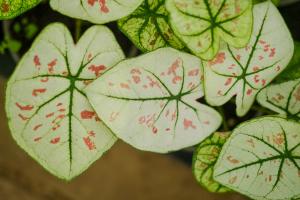How to Save Tomato Seeds for Planting Next Year
If you've grown tomatoes in your garden, you know that these juicy, flavorful fruits are one of the highlights of summer. But did you know that you can also save tomato seeds to plant next year? This simple and cost-effective method can help you grow your favorite varieties year after year. Here's how:
Harvest Ripe Tomatoes
The first step in saving tomato seeds is to harvest ripe tomatoes. Choose the healthiest and best-looking tomatoes from your garden, and wait until they're fully mature. Ripe tomatoes will be deep in color and slightly soft to the touch. Be careful not to choose overripe tomatoes, as they may have started to rot and won't produce viable seeds.
Extract the Seeds
Once you've picked your ripe tomatoes, it's time to extract the seeds. Cut the tomato in half and gently squeeze the pulp and seeds out into a bowl. If you have several tomatoes to extract, you can use a blender to make the process faster and more efficient. Blend the tomato pulp and seeds on low speed until the mixture is smooth.
Ferment the Seeds
After you've extracted the seeds, you'll need to ferment them to remove the gelatinous coating that surrounds the seeds. This coating can prevent the seeds from germinating properly, so removing it will improve your chances of success when planting the next season. To ferment the seeds, put the tomato mixture in a jar or container and cover it loosely with a lid. Store the jar in a warm place, away from direct sunlight. Stir the mixture once a day. After a few days, you'll see a layer of mold forming over the surface. This is normal and indicates that the fermentation process is working. Continue to stir the mixture every day until you see the seeds sinking to the bottom of the jar. This can take up to four days, depending on the temperature in your kitchen.
Rinse and Dry the Seeds
Once you've fermented the seeds, it's time to rinse them thoroughly to remove any remaining bits of pulp and mold. Pour the mixture through a fine mesh strainer and rinse the seeds under cold running water. You can also use a colander to make sure that all the seeds are clean. Spread the seeds out onto a paper towel or a plate and let them air dry for a few days. Be sure to keep them in a cool, dry place away from direct sunlight.
Store the Seeds
When your tomato seeds are completely dry, they're ready to be stored. You can keep them in paper envelopes or small plastic bags, making sure to label them with the tomato variety and the date of harvest. Store the seeds in a cool, dry place, away from humidity and fluctuating temperatures. A dark pantry or a refrigerator drawer are good places to store tomato seeds.
Now that you know how to save tomato seeds for planting next year, you can enjoy your favorite tomato varieties every summer. Seed saving is a simple and rewarding way to be more self-sufficient and reduce your gardening costs. Plus, you'll have the satisfaction of knowing that you're preserving heirloom tomato varieties for future generations to enjoy.

 how many times do yo...
how many times do yo... how many planted tre...
how many planted tre... how many pine trees ...
how many pine trees ... how many pecan trees...
how many pecan trees... how many plants comp...
how many plants comp... how many plants can ...
how many plants can ... how many plants and ...
how many plants and ... how many pepper plan...
how many pepper plan...





























